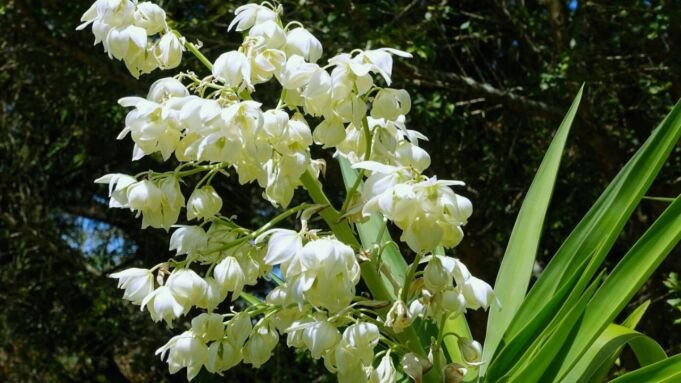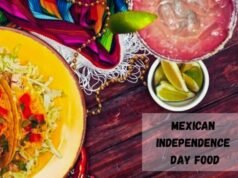Flor de Izote the national flower of El Salvador, is much more than a beautiful bloom. Known scientifically as Yucca gigantea, this remarkable plant is revered not only for its striking white flowers that adorn the country’s landscapes but also for its culinary versatility and nutritional benefits.
Traditionally woven into the fabric of Salvadoran culture, Flor de Izote appears in various dishes, where its edible flowers bring a subtle, slightly sweet flavor to the local cuisine.
Beyond the kitchen, the flower holds a place of honor in ceremonies and is even celebrated for its potential medicinal properties. This article delves into the rich history, uses, and cultural significance of Flor de Izote, illuminating why it continues to be a symbol of pride and a staple in Salvadoran life.
Botanical Description and Cultural Significance
Yucca gigantea is a towering plant that can reach heights of up to 30 feet. It features sharp, sword-shaped leaves and a thick, central stem that blooms with clusters of white, bell-shaped flowers. These blossoms, which appear primarily in the spring, emit a gentle, captivating fragrance that attracts humans and pollinators alike.
In El Salvador, the Flor de Izote is more than just a plant; it is a national emblem that symbolizes purity and beauty. It was designated as the national flower due to its widespread presence and use in traditional Salvadoran celebrations, where its blossoms adorn homes and streets during festive occasions.
The National Flower of El Salvador
Flor de Izote, the national flower of El Salvador, is not only beautiful but also edible! This unique white blossom appears only in April and May, adding to its exclusivity. Known for its delicate nature, Flor de Izote has been a popular part of the local diet since the colonial era.
The national flower of El Salvador is the Flor de Izote, scientifically known as Yucca gigantea. This majestic plant, characterized by its towering, spear-like leaves and clusters of white, bell-shaped flowers, holds deep cultural significance in Salvadoran society. Blooming primarily in the spring, the Flor de Izote beautifies the landscape and plays a vital role in local traditions.
It is commonly used in Salvadoran cuisine, particularly in dishes that blend its edible blossoms with other local ingredients, showcasing the flower’s versatility beyond its ornamental value. As a symbol of national pride, the Flor de Izote represents the resilience and natural beauty of El Salvador, making it a cherished emblem across the country.
Related: Torta Cubana
What is Flor De Izote Used For?
The izote flower, recognized as the national flower of El Salvador, is also one of the country’s patriotic symbols. Its utility and adaptability extend beyond its beauty, as it is employed in textiles, alcohol production, and Salvadoran cuisine, showcasing its significance and versatility in various aspects of Salvadoran life.
Can You Eat Flor De Izote?
Yes, Flor de Izote is not only El Salvador’s national flower but also an edible delicacy enjoyed in various dishes. The white, bell-shaped blooms of the Yucca gigantea are harvested for culinary use, particularly during their blooming season in the spring. In Salvadoran cuisine, the petals of Flor de Izote are often incorporated into recipes such as soups and scrambled eggs with tomatoes and onions, known locally as “huevos con izote.”
This practice highlights the flower’s mild, slightly sweet flavor, which adds a unique dimension to traditional dishes. Rich in nutrients, Flor de Izote is a cherished ingredient that brings both nutritional value and cultural significance to the table.
Culinary Uses of Flor De Izote
The Flor de Izote is celebrated not only for its beauty but also for its versatility in the kitchen. It is commonly used in local dishes, where its petals are mixed into soups or scrambled with eggs to create a dish known as “huevos con izote.” This flower is not only delicious but also nutritious, offering a good source of vitamins and minerals.
Harvesting and Preparation
Harvesting Flor de Izote requires timing and care to ensure the flowers are picked at their peak for culinary use. The best time to collect the blossoms is in the early morning when they are most fresh. Preparing the flowers for cooking involves cleaning them thoroughly to remove any dirt or insects, followed by blanching them to soften the petals before they are added to various dishes.
Ecological and Medicinal Aspects
The Yucca gigantea plays an important ecological role in its habitat, providing food and shelter for local wildlife. Beyond its environmental impact, Flor de Izote is reputed to have medicinal properties, including anti-inflammatory effects, although more research is needed to fully validate these claims.
Despite its cultural and ecological importance, the Flor de Izote faces threats from habitat destruction and overharvesting. Conservation efforts are crucial to ensure that future generations can continue to enjoy and benefit from this remarkable plant. Initiatives aimed at sustainable harvesting practices and the preservation of its natural habitat are underway.
READ: Best Things to Do in Albany GA
Health Benefits of Flor De Izote
Flor de Izote, the edible flower of the Yucca gigantea plant, offers several health benefits that make it a valuable addition to the diet, particularly in regions where it is natively found and consumed. Here are some of the key health benefits of Flor de Izote:
- Rich in Nutrients: Flor de Izote is a good source of important vitamins and minerals, including vitamin C, calcium, and iron. These nutrients are vital for maintaining healthy immune function, bone health, and oxygen transport in the blood.
- Dietary Fiber: The flowers contain dietary fiber, which is essential for good digestive health. Fiber helps to regulate digestion, prevent constipation, and maintain a healthy weight by promoting feelings of fullness.
- Antioxidant Properties: Like many plant-based foods, Flor de Izote contains antioxidants. These compounds help to combat oxidative stress in the body, which can reduce the risk of chronic diseases such as heart disease and cancer.
- Anti-inflammatory Effects: Some studies suggest that compounds found in the Yucca species have anti-inflammatory properties. This can be beneficial in reducing inflammation-related symptoms in conditions like arthritis.
- Low in Calories: Flor de Izote is low in calories, making it an excellent choice for those looking to manage their weight without sacrificing flavor and nutrition.
- Potential Medicinal Uses: Traditional uses of Flor de Izote in folk medicine include treatments for liver and gallbladder problems. While scientific research is limited, the historical use of Yucca flowers suggests potential medicinal benefits.
Including Flor de Izote in meals can provide a tasty and nutritious option that supports overall health while adding variety to the diet. Whether used in traditional Salvadoran dishes or explored in new culinary creations, Flor de Izote is a versatile ingredient that brings both flavor and health benefits to the table.
Conclusion
Flor de Izote is deeply embedded in the cultural and culinary life of El Salvador, representing a blend of natural beauty and practical utility. Its continued significance in Salvadoran tradition underscores the need to appreciate and protect this remarkable flower.
Read More: Best Time to Visit Death Valley National Park
Frequently Asked Questions (FAQs) about the Flor de Izote
Here are frequently asked questions about the Flor de Izote, providing insights into its various aspects from botanical features to cultural significance:
What is Flor de Izote?
Flor de Izote is the national flower of El Salvador, scientifically known as Yucca gigantea. It is renowned for its striking white blossoms that are not only visually appealing but also edible.
Where can Flor de Izote be found?
While native to El Salvador and other parts of Central America, Flor de Izote can also be found in various tropical and subtropical regions around the world where the climate supports its growth.
When does Flor de Izote bloom?
Flor de Izote typically blooms during the spring, with its white flowers appearing from April to May, depending on the local climate conditions.
Can you eat Flor de Izote?
Yes, the blossoms of Flor de Izote are edible and commonly used in Salvadoran cuisine. They are often incorporated into dishes such as soups and scrambled eggs.
What are the health benefits of eating Flor de Izote?
Flor de Izote is nutritious, offering benefits such as dietary fiber, vitamins, and minerals. It also contains antioxidants and has anti-inflammatory properties, which can contribute to overall health.
How is Flor de Izote used in cooking?
The most common culinary use of Flor de Izote is in scrambled eggs with tomatoes and onions, known as “huevos con izote”. The flowers are also used in soups and other traditional dishes, where they add a mild, slightly sweet flavor.
What is the cultural significance of Flor de Izote in El Salvador?
Beyond its culinary uses, Flor de Izote holds significant cultural value in El Salvador. It symbolizes national pride and beauty and is used in various traditional celebrations and decorations throughout the country.















